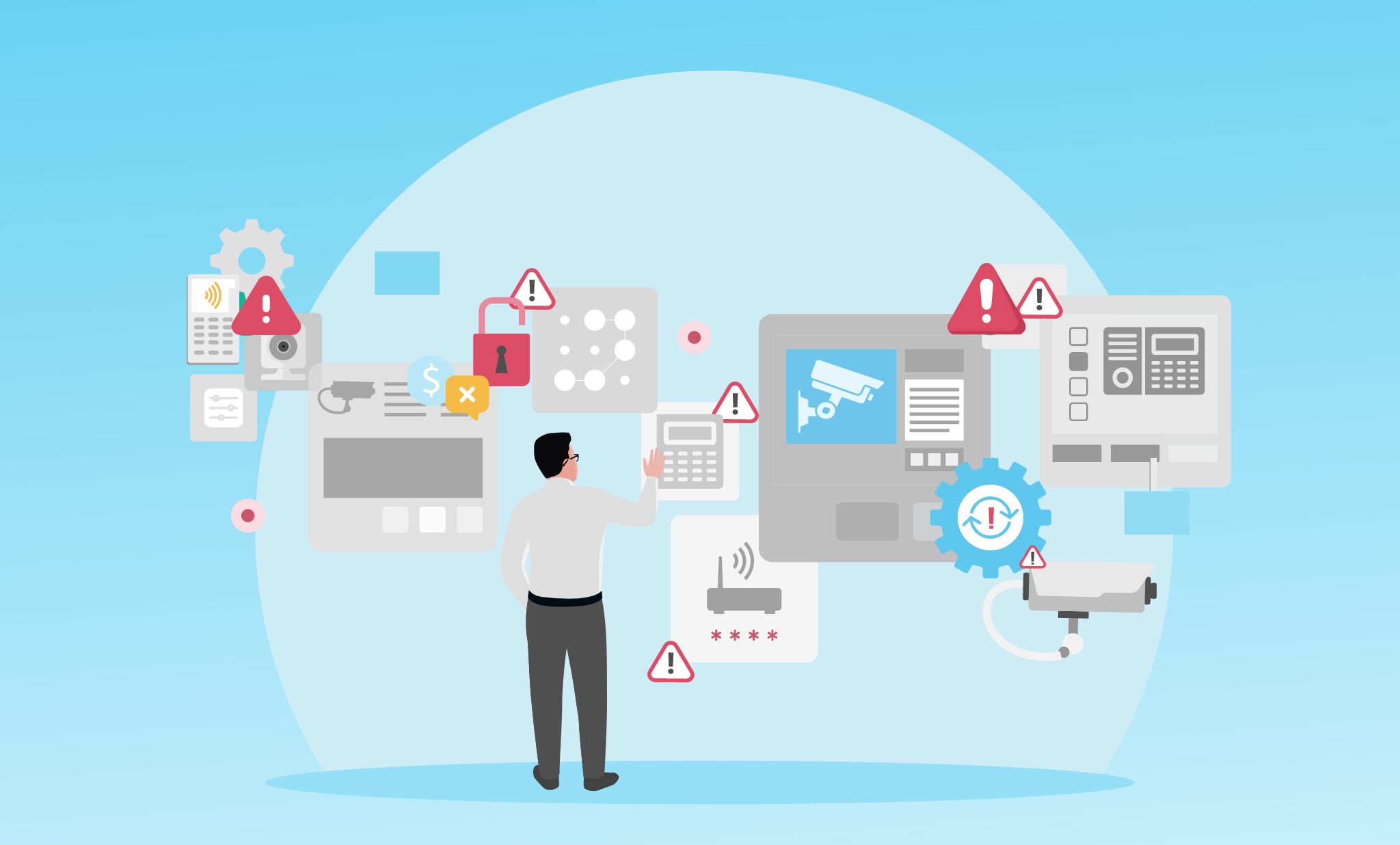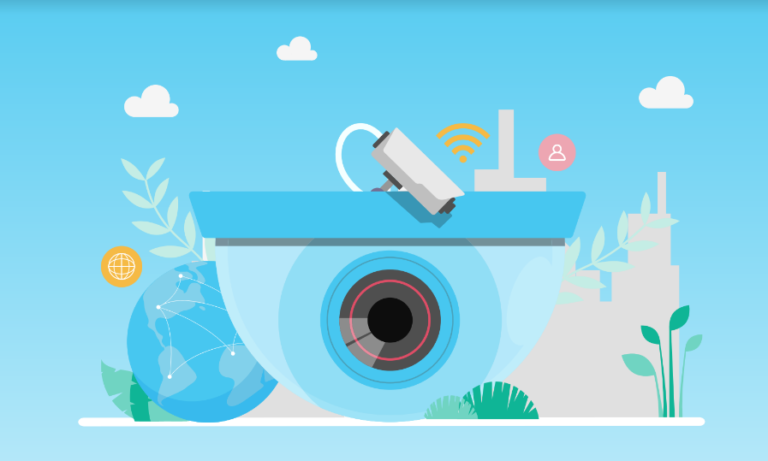
It’s hard to overstate how dependent physical security teams have become on connected devices to protect their organizations’ safety, their business interests, and the safety of others (such as guests and customers).
But what happens when those devices aren’t managed properly? This is a tremendously common scenario – and the consequences can be serious, because even the highest-quality physical security devices require regular monitoring and maintenance.
Specifically, there are four key dangers that can result from a lack of adequate device management. Since all four of these dangers can arise at any time in physical security devices that aren’t monitored and maintained consistently, it’s essential to treat device management as a foundational aspect of your organization’s physical security.
By making sure you have the infrastructure, technologies, and processes in place to manage your connected physical security devices from day one, you can maximize the value you get from each device and protect your organization from these four major dangers.
Danger #1: Excessive downtime and other technical issues
As helpful as connected physical security devices can be, sometimes things go wrong. Technical issues can result in downtime, prevent devices from recording and/or transmitting, and more. Even if a device itself is working properly, the security benefit that it offers can be compromised if a technical problem arises elsewhere in its ecosystem, such as in a network switch or video management system (VMS).
Perhaps the most notorious example of what can go wrong when a physical security device stops working properly occurred during the 2022 shooting attack in a Brooklyn subway station, as the nearby cameras were down.
And the risk of excessive downtime is a serious one for any organization that becomes reliant on a fleet of connected physical security devices before starting to manage all of them properly. First, a lack of routine, proactive device maintenance can increase the organization’s risk of having technical issues. Second, a lack of automatic, round-the-clock monitoring of those devices’ operational statuses can result in significant delays in finding out when downtime and other technical issues arise. And third, once these issues are discovered, a lack of automated and remote capabilities means that it can take a dangerously long time to resolve them.
Danger #2: Noncompliance
Physical security teams are well aware of the risk of noncompliance. They know that they need to ensure their legal compliance – a challenge that can be complicated by changes in laws and regulations over time. They also know that they need to comply with their own IT policies.
But whenever an organization relies on connected physical security devices without managing them properly, it lacks the comprehensive visibility needed to ensure their compliance. For instance, to ensure that your organization is NDAA-compliant, you need detailed insight into the inner components of your connected physical security devices, such as microchips.
To ensure that their physical security devices don’t present a risk of noncompliance, organizations need to maintain those devices consistently from the very beginning, in line with both relevant legal requirements and their own policies and standards. That often requires upgrading firmware as needed, rotating passwords on a certain schedule, managing certificates, and replacing outdated devices that have passed their end of life or end of service.
Danger #3: Significant financial cost
As important as it is for physical security teams to protect their organizations, they also need to keep in mind their budgetary constraints. Given that they’re typically seen as a cost center and funded accordingly, operating in a cost-effective way is often essential in order to provide the security that their organizations require.
But if connected physical security devices aren’t managed properly from day one, dealing with the consequences can be a serious financial burden. Perhaps most obviously, there’s the risk that a device will fail to prevent a physical security incident – resulting in a lawsuit, an expensive resolution process, a loss of revenue, and/or other expenses.
There’s also a danger that an inadequately managed device will require a costly truck roll and on-site work to address technical issues that arise. Given that a lack of proactive device maintenance can result in needless downtime and other technical issues, organizations that don’t take these steps sufficiently might save money in the short term, only to get stuck with a far larger bill down the road. And given that the need for 70% of these truck rolls can be prevented by restarting devices remotely, organizations that lack tools for restarting them remotely can be forced to shell out for manual work that could have been avoided.
Danger #4: Cyber threats
While connected devices can make a powerful difference for organizations’ physical security, those that come into use without being managed adequately can offer easy and lucrative targets to hackers and cybercriminals. When routine maintenance steps (such as password rotations, firmware upgrades, and certificate management) aren’t taken as necessary, those devices can be left with serious cyber vulnerabilities.
Additionally, when connected physical security devices aren’t managed properly, a lack of visibility can heighten the cyber risk they present. Without automatically monitoring those devices, it might take you a long time to find out should one or more of them be targeted by cybercriminals. And without knowing when to replace outdated devices (and without alerts warning you to budget for replacement devices ahead of time), you can be left using devices that are past their end of life or end of service – devices that can be highly vulnerable to hackers.
And the risk posed by cybercriminals eager to hack into physical security devices is a significant and expensive one. Notably, IBM’s Cost of a Data Breach Report 2023 found the average data breach in the U.S. to come with a price tag of $9.48 million.
Taking stock of your organization’s risk
All four of these dangers are serious and widespread, and they can all be mitigated by managing your physical security devices properly from the very beginning. But given the scale and complexity of their fleets of connected physical security devices, many organizations come up short when it comes to managing all of their devices.
That puts them on shaky ground – not only in terms of the physical risks they face, but also in terms of compliance, cost-effectiveness, and cybersecurity. Instead, they need to approach device management as a foundational aspect of their physical security.
The good news is that it’s never too late to start managing your physical security devices properly. Whether you’ve already purchased and installed many physical security devices or you’re just now building up your fleet of devices, you can make device management a fundamental part of your approach to physical security.
If you’re looking to help your organization treat device management as a foundational aspect of physical security, the way to start is by bolstering your visibility. In order to make sure you’re safe from all four key dangers of inadequately managed physical security devices, you need a full picture of device performance, cybersecurity, compliance status, end of life, and more.
How well are your organization’s physical security devices managed, what risks do they present, and how can you address those risks effectively? For detailed insight into the state of your organization’s physical security devices and the maintenance steps they require, get a free system evaluation report from SecuriThings.




